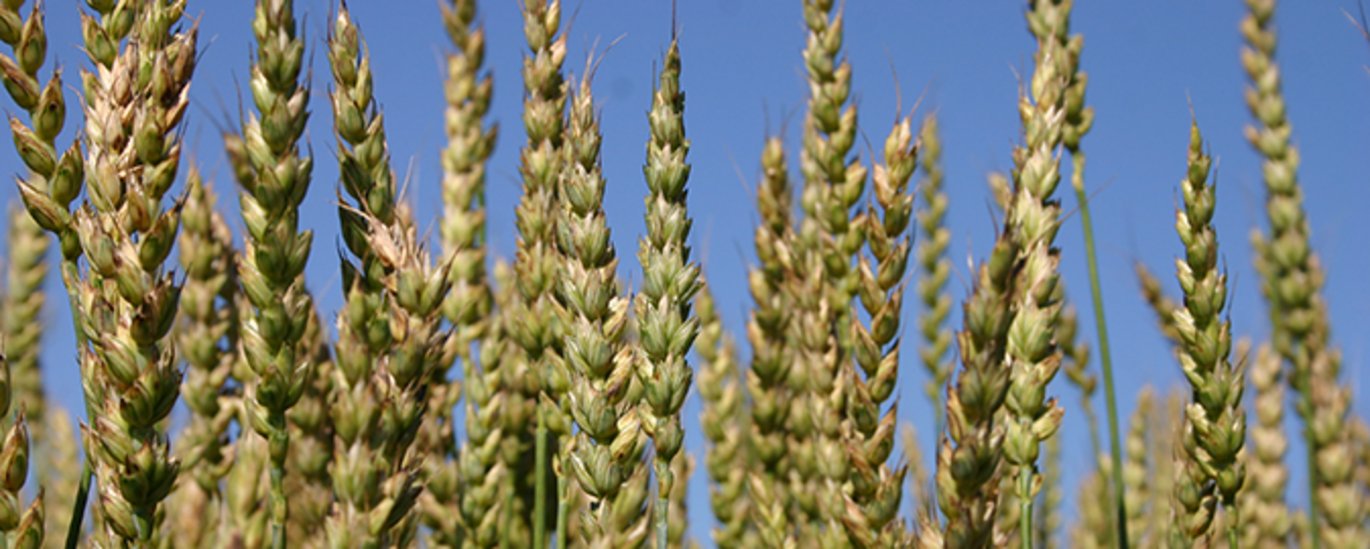Unique wheat passes the test
A unique, patented wheat can have significant importance to agriculture, the environment and undernourished people in developing countries. Animal tests recently demonstrated that this special wheat increases P and Ca digestibility.

Stronger legs in fast-growing broilers, reduced phosphorus emissions to the environment, improved health for undernourished populations in developing countries and better use of scarce resources – these are some of the perspectives of a unique type of wheat; a wheat with a specific ability to increase the digestibility of phosphorus and other important minerals.
Scientists from the Department of Molecular Biology and Genetics, Aarhus University, have developed and patented the new type of wheat. Following years of research and development, the wheat then needed prove its worth in the tough environment of the digestive system – and it succeeded.
Phosphorus is tied up
It all started with a single wheat plant. The scientists were on the lookout for certain cereal genes that affect the availability of vital minerals in feed and foods. Minerals such as phosphorus are often tightly bound in phytate. The enzyme phytase helps to break down phytate, thus increasing mineral availability.
Monogastrics such as pigs and poultry are unable to produce phytase. Cereals contain genes that code for phytase activity but the activity is not sufficient to break down all phytate compounds in the feed. Therefore, enzymes are added to the feed in conventional farming to help the animals utilize phosphorus. Adding enzymes to organic feed is not an option.
If the animals do not utilize phosphorus optimally, it can affect their growth and health. In addition, the non-digested surplus is excreted and ends up in the environment.
Scientists demonstrated phytase genes
The scientists succeeded in finding the genes controlling phytase activity, which in itself was an important step. Next, they looked for a mutant wheat plant. This was the beginning of something big.
- We found the specific genes that are important to phytase activity in cereals. Then we found a mutant in which the phytase genes are expressed more powerfully than in ordinary cereals, resulting in increased phytase activity, explains Associate Professor Henrik Brinch-Pedersen, Department of Molecular Biology and Genetics.
- Read the article: Phosphorus in wheat can be made more readily available
The unique wheat type was optimized and patented in cooperation with the British company Plant Bioscience Ltd. The name of the new wheat is HIGHPHY.
- Propagation of the wheat took place in Andalusia as it is possible to harvest twice in the growth season there. This meant that we could get twice as much new plant material than if we had propagated the wheat in Denmark, says Henrik Brinch-Pedersen.
Coping with the digestive system
The next question was if this super wheat with its increased phytase activity would be able to cope with the digestive system. The wheat was tested in broilers at Nottingham Trent University in Great Britain and the test results have now been published in the scientific journal Animal: An International Journal of Animal Bioscience.
The broiler experiments demonstrated that supplementing the feed with HIGHPHY wheat was a very efficient way of releasing the phosphorus in the feed and make it easily available to the animals. For feed in which regular wheat had been completely replaced by HIGHPHY wheat the experiments demonstrated improved digestion coefficients for calcium and phosphorus of 14.6 and 22.8 percent, respectively, compared to feed containing regular wheat and with a supplement of phytase enzyme.
Exciting perspectives for the new wheat
The next step will be to test HIGHPHY on pigs and humans, and Henrik Brinch-Pedersen already sees interesting perspectives of the new cereal.
- Improved phosphorus digestion in livestock will result in reduced phosphorus emissions to the environment. In addition, calcium phosphate is a very scarce resource, so if phosphorus becomes more readily available to the animals, we can reduce our use of this important resource, he explains.
HIGHPHY may also be of use to organic farmers.
- Organic farmers cannot add enzymes to animal feed. This means that organic livestock miss out on most of the phosphorus in the cereals, which will instead end up in the environment. This problem is easily solved by using the patented wheat, which has been naturally produced via ordinary breeding efforts, says Henrik Brinch-Pedersen.
The new cereal may also be of significant importance to people in developing countries, as phytase also affects the availability of other minerals such as iron, zinc and – in certain circumstances – calcium. Major parts of the populations in developing countries suffer from iron and zinc deficiencies.
- 700 million people worldwide suffer from iron deficiency because of the high phytate level of their diets. If wheat containing its own phytate-metabolizing enzyme became available, this could significantly improve the health of the population in many of these countries, says Henrik Brinch-Pedersen.
- For many years, our aim has been to develop a high phytase activity wheat, and we have now reached that milestone. Demonstrating that it is also efficient in animal feed is extremely satisfying, says a pleased Henrik Brinch-Pedersen.
Further information
For further information please contact:
Associate Professor Henrik Brinch-Pedersen
Department of Molecular Biology and Genetics
Aarhus University
Email: hph@mbg.au.dk
Telephone: +45 8715 8268
